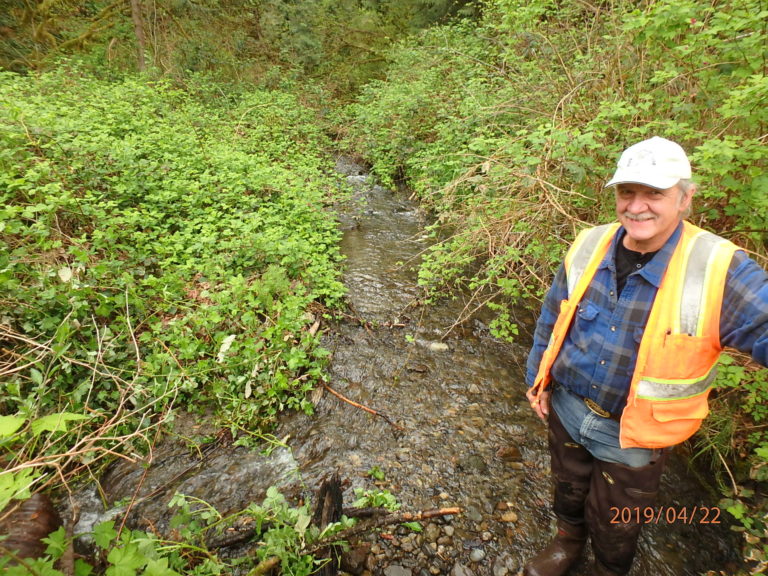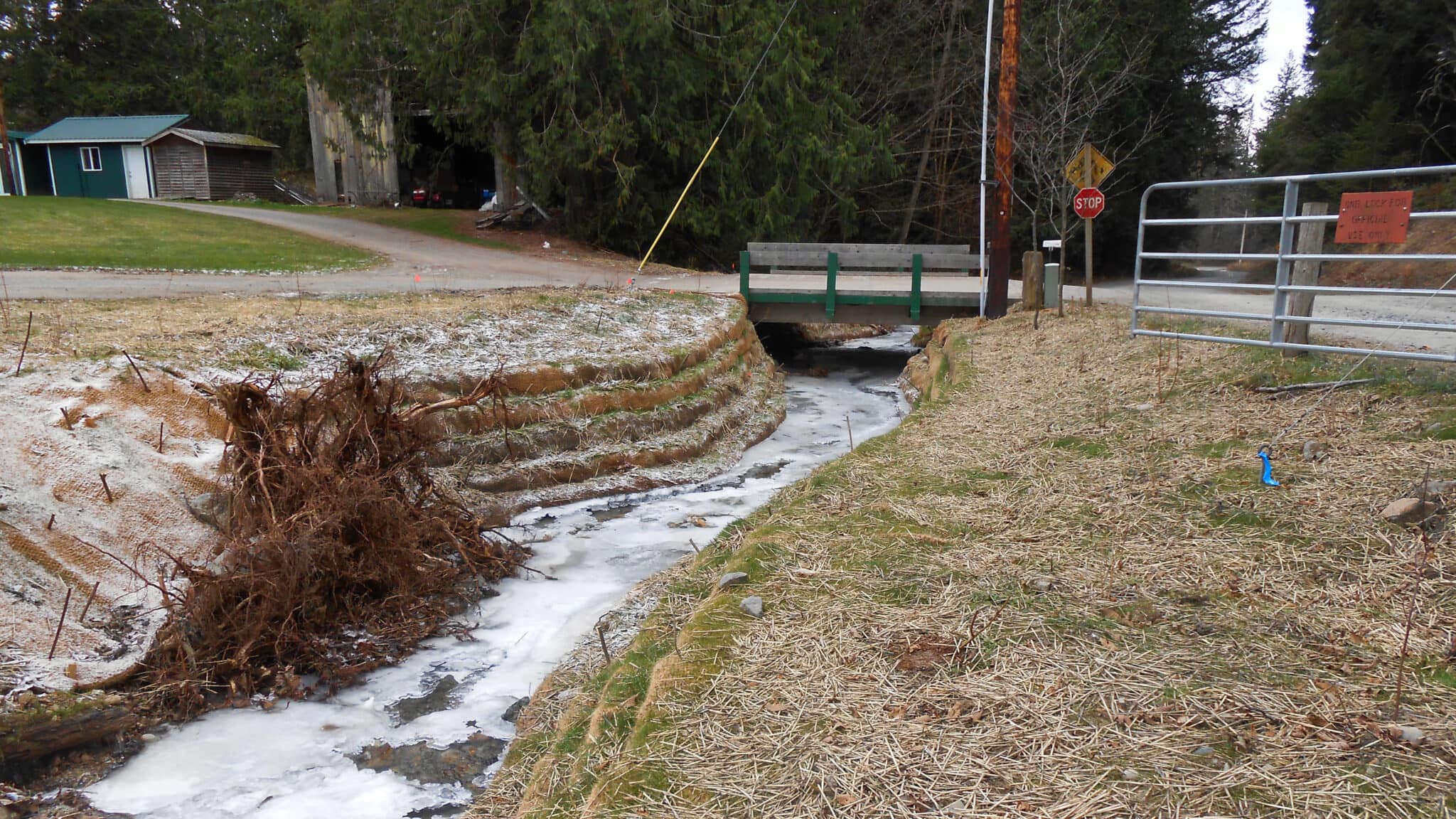

The project occurred on Tracy Creek, a tributary to Walker Creek which flows into the Skagit River in western Washington State, where two private undersized driveway culverts block coho, cutthroat, steelhead, and Chinook from accessing 1.13 miles of vital stream and wetland habitat. By interrupting habitat connectivity, even a single barrier can have a disproportionately large impact on the abundance and resiliency of wild fish populations.
Man-made barriers to fish migration have significant impacts on wild fish; limiting distribution, reducing access to spawning and rearing habitats, and disrupting the spatial habitat complexity historically available to fish populations. Whether for resident species that spend their entire lives in one watershed, or migratory species that travel thousands of miles, instream barriers compromise a populations’ ability to weather environmental uncertainties. Evolutionary fitness of the entire population is weakened when barriers restrict gene flow, creating small, isolated sub-groups that can suffer from inbreeding.
The Family Forest Fish Passage Program (FFFPP) assists private forestland owners in removing culverts and other stream crossing structures that prevent ESA listed salmonids from migrating upstream. Through the management of DNR’s Washington State Recreation and Conservation Office some 376 landowners have taken advantage of the program to remove 433 barriers since 2003.
Our project partner Natural Resources Conservation Service (NRCS) designed and constructed fish passage improvements at the both culvert crossings, removing the undersized culverts and replacing them with steel bridges.
WFC designed and implemented a bank stabilization project using extensive coir wrapping, large woody debris (LWD) placement, and native riparian planting.
Location | Start Date |
|---|---|
Tracy Creek, a tributary to Walker Creek, Skagit County | 10/07/2010 |
Project Type | Completion Date |
|---|---|
Fish Passage | 11/30/2013 |
The goal of the project was to connect isolated habitat to increase the range and distribution of salmon.
The objective of the project was to increase access to areas blocked by human-caused impediments. The project also addressed exacerbated bank erosion in the vicinity of the site.
Primary Habitats Impacted By Project: | Managing Agency/ Organization: |
|---|---|
Riparian Stream Channels | Wild Fish Conservancy |
Project Contact: | Budget or Project Cost: |
|---|---|
Jamie Glasgow | $112,828.9 |
Funding Sources: | Partners: |
|---|---|
Family Forest Fish Passage Grants | Mt. Baker Council Boy Scouts of America, Natural Resources Conservation Service (NRCS) |
Join our mailing list to recieve important updates on our work, the latest wild fish news, & opportunities to take action to support wild fish.
This site is protected by reCAPTCHA and the Google Privacy Policy and Terms of Service apply.
Wild Fish Conservancy is recognized as a 501(c)3 non-profit by the IRS